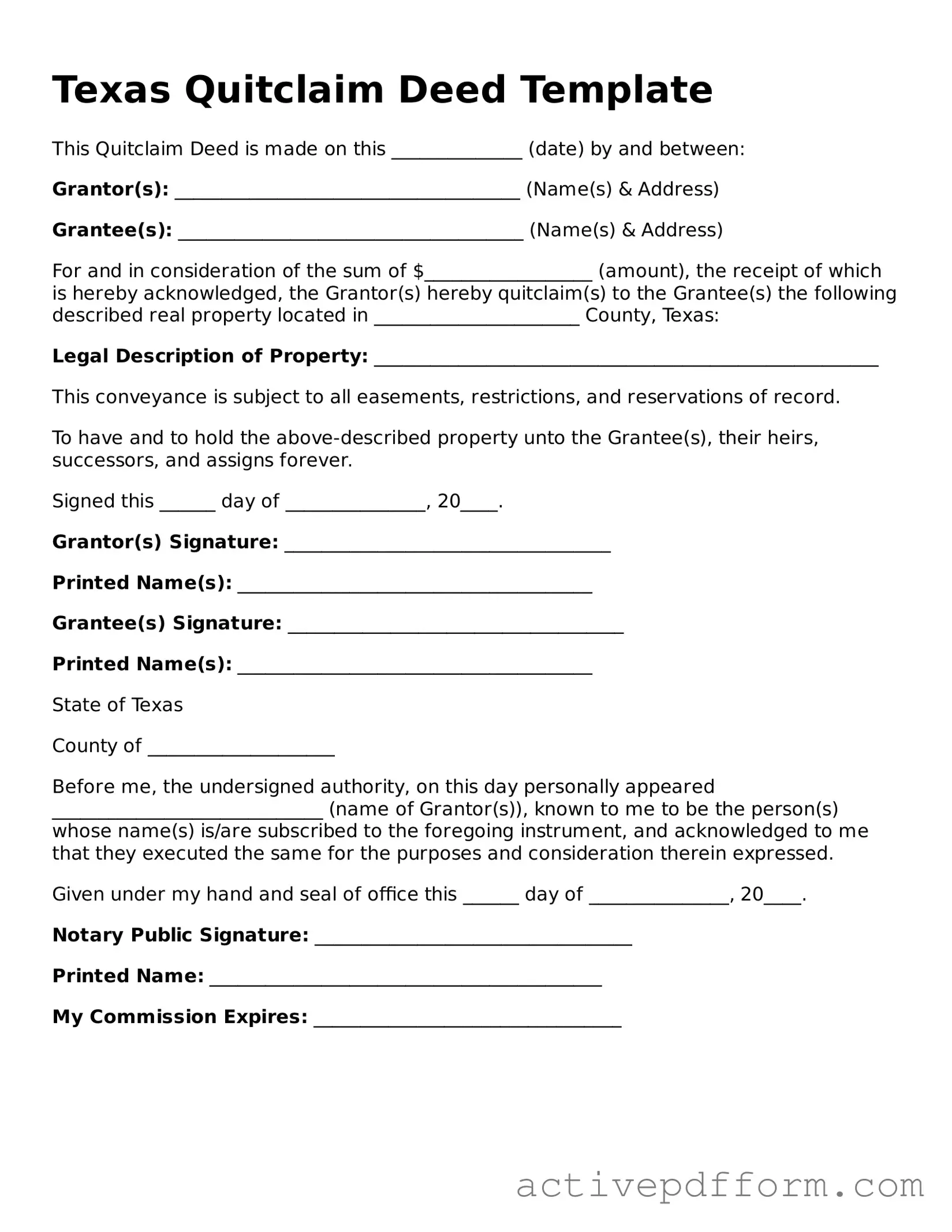Texas Quitclaim Deed Template
This Quitclaim Deed is made on this ______________ (date) by and between:
Grantor(s): _____________________________________ (Name(s) & Address)
Grantee(s): _____________________________________ (Name(s) & Address)
For and in consideration of the sum of $__________________ (amount), the receipt of which is hereby acknowledged, the Grantor(s) hereby quitclaim(s) to the Grantee(s) the following described real property located in ______________________ County, Texas:
Legal Description of Property: ______________________________________________________
This conveyance is subject to all easements, restrictions, and reservations of record.
To have and to hold the above-described property unto the Grantee(s), their heirs, successors, and assigns forever.
Signed this ______ day of _______________, 20____.
Grantor(s) Signature: ___________________________________
Printed Name(s): ______________________________________
Grantee(s) Signature: ____________________________________
Printed Name(s): ______________________________________
State of Texas
County of ____________________
Before me, the undersigned authority, on this day personally appeared _____________________________ (name of Grantor(s)), known to me to be the person(s) whose name(s) is/are subscribed to the foregoing instrument, and acknowledged to me that they executed the same for the purposes and consideration therein expressed.
Given under my hand and seal of office this ______ day of _______________, 20____.
Notary Public Signature: __________________________________
Printed Name: __________________________________________
My Commission Expires: _________________________________
